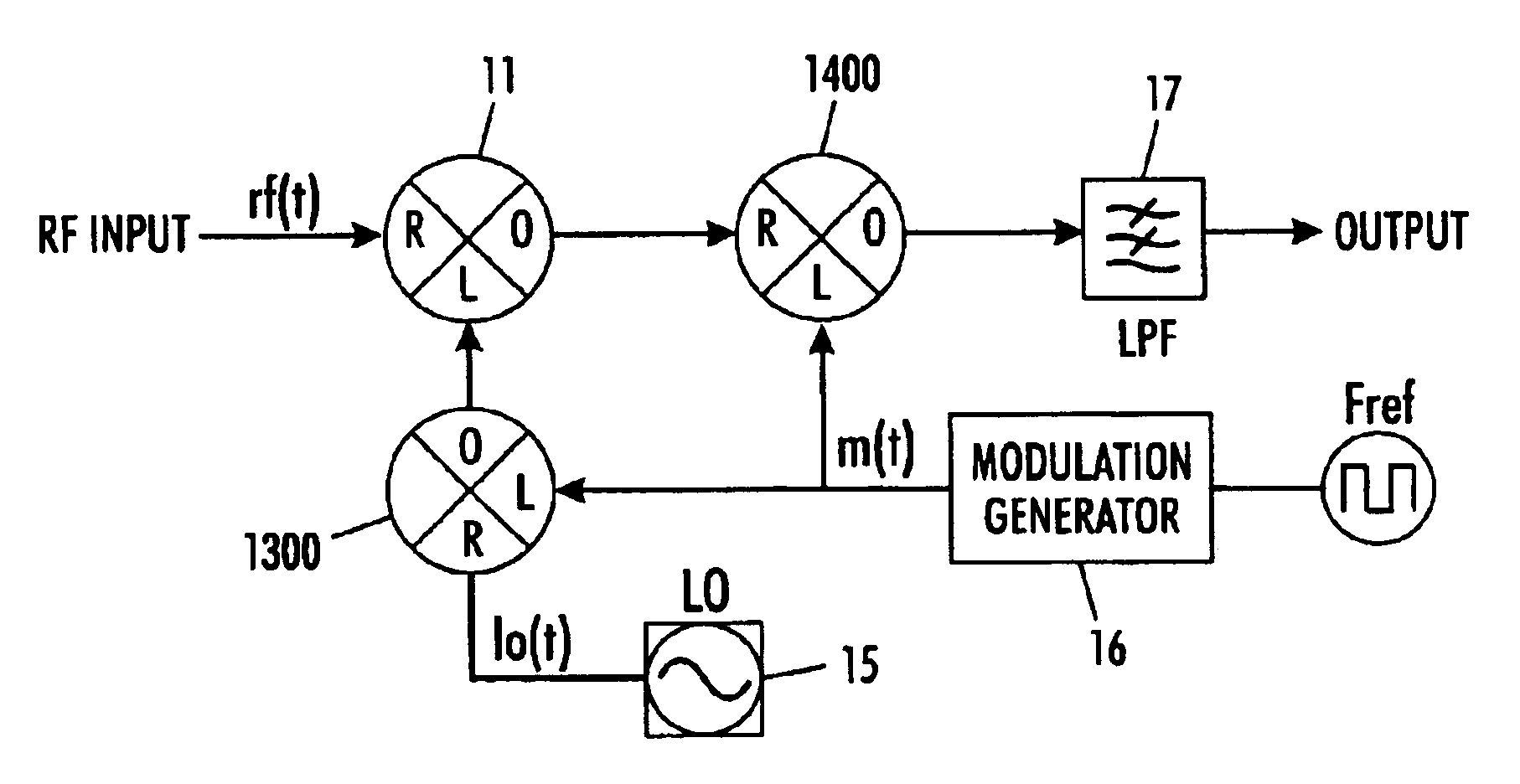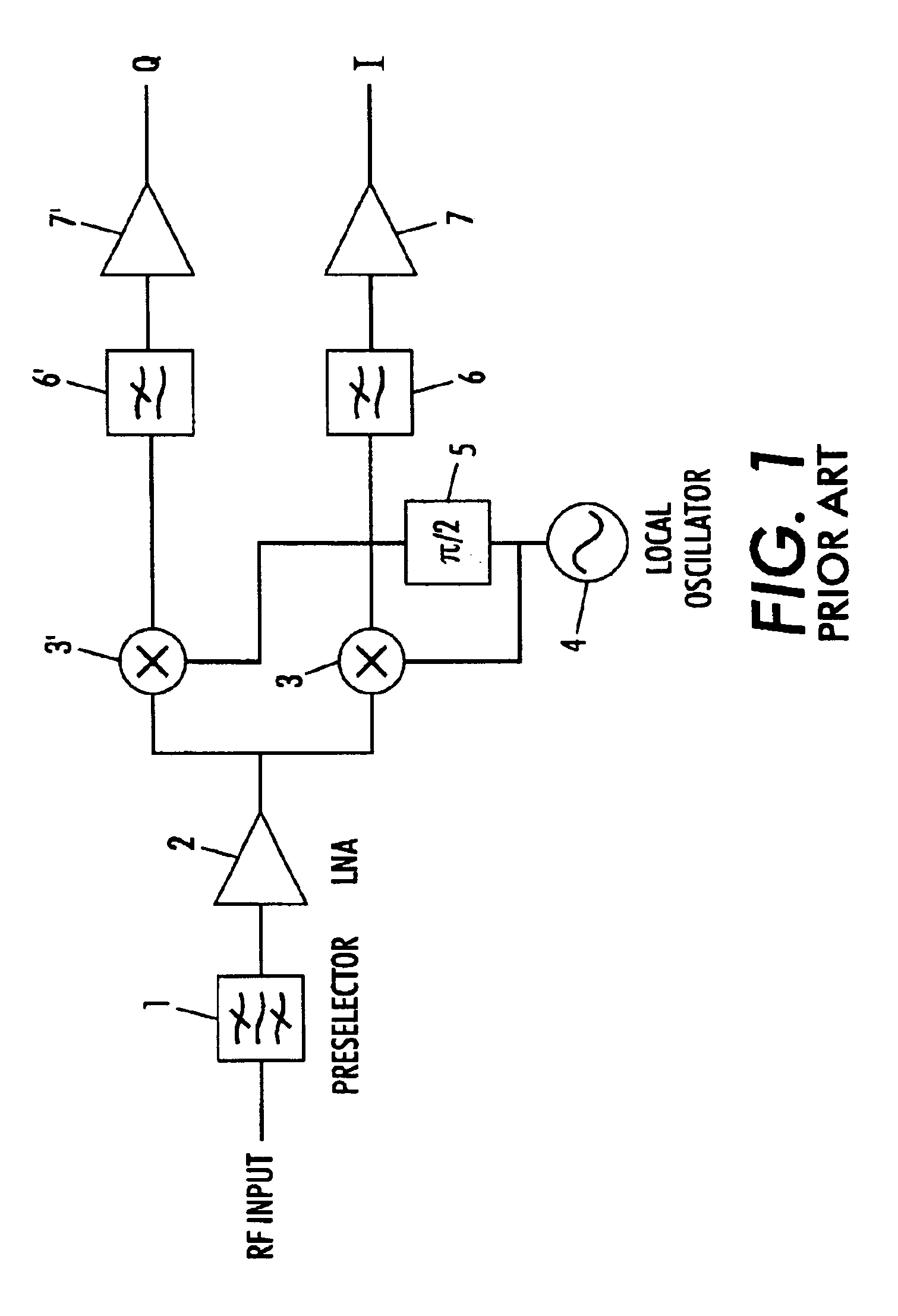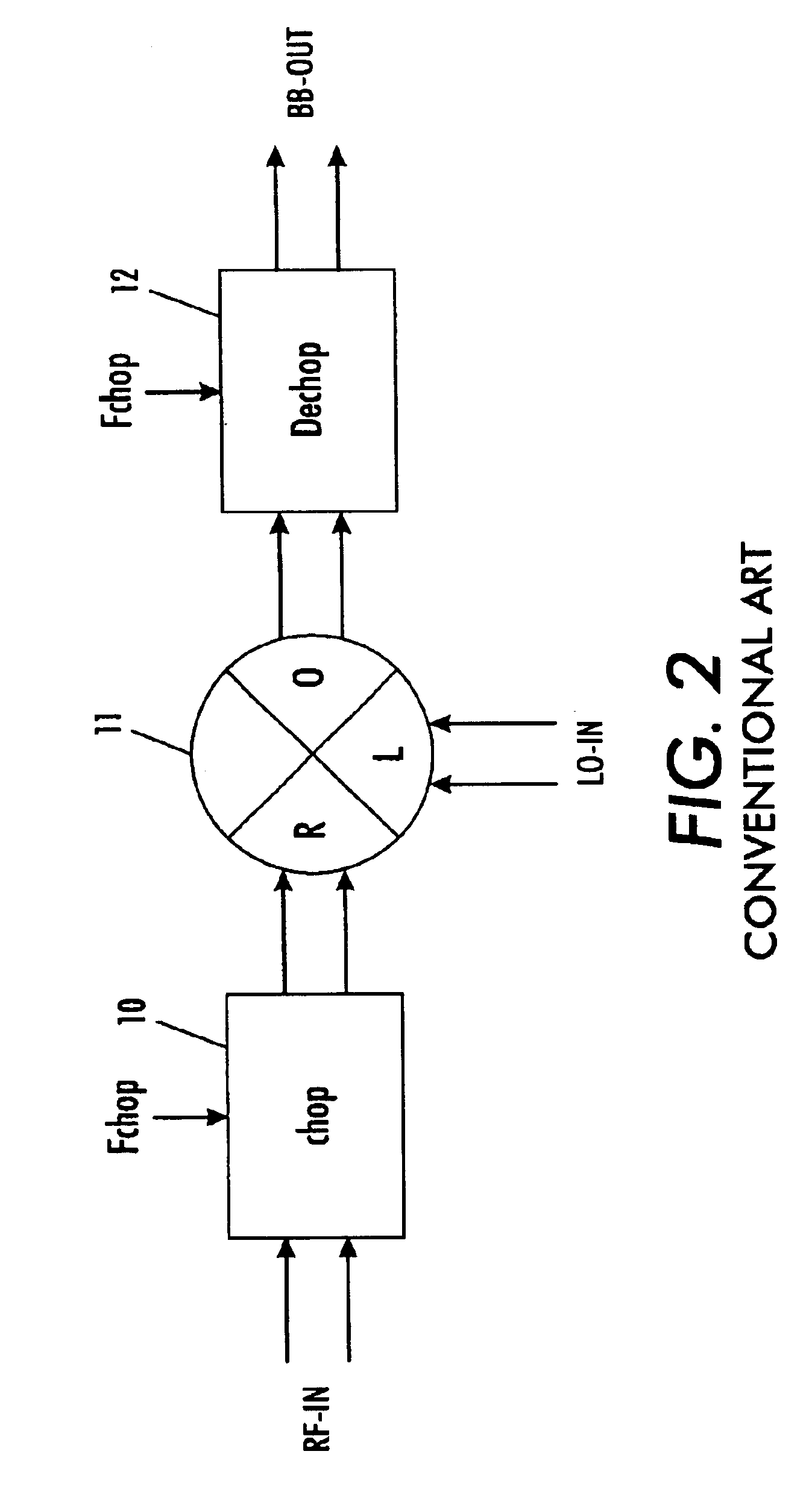Direct conversion receiver apparatus
a receiver and receiver technology, applied in the field of direct conversion receivers, can solve the problems of b>1/b>passing unwanted signals of preselector filters, superheterodyne receivers using expensive and non-integrable rf, and components, etc., to achieve the effect of suppressing spurious responses
- Summary
- Abstract
- Description
- Claims
- Application Information
AI Technical Summary
Benefits of technology
Problems solved by technology
Method used
Image
Examples
Embodiment Construction
[0049]FIG. 3 illustrates a frequency translator wherein a local oscillator 15 produces a local oscillation signal, lo(t). A modulation circuit 130 modulates the local oscillation signal lo(t) with a signal m(t) from modulation generator 16 that generates signal m(t) in response to a received frequency. A RF mixer 11 mixes a received radio frequency signal rf(t) with the modulated local oscillation signal from modulation circuit 130. The mixed signal is fed to a demodulation circuit 140 that translates the desired signal of the mixed signal into band and translates undesired signal of the mixed signal out of band by demodulating the mixed signal with the signal m(t). The translated signal is then passed through a lowpass filter 17 to remove the undesired signals of the mixed signal.
[0050]In a further implementation, as illustrated in FIG. 4, a local oscillator 15 produces a local oscillation signal lo(t). A RF mixer circuit 1300 receives the local oscillation signal lo(t) at its radi...
PUM
 Login to View More
Login to View More Abstract
Description
Claims
Application Information
 Login to View More
Login to View More - R&D
- Intellectual Property
- Life Sciences
- Materials
- Tech Scout
- Unparalleled Data Quality
- Higher Quality Content
- 60% Fewer Hallucinations
Browse by: Latest US Patents, China's latest patents, Technical Efficacy Thesaurus, Application Domain, Technology Topic, Popular Technical Reports.
© 2025 PatSnap. All rights reserved.Legal|Privacy policy|Modern Slavery Act Transparency Statement|Sitemap|About US| Contact US: help@patsnap.com



